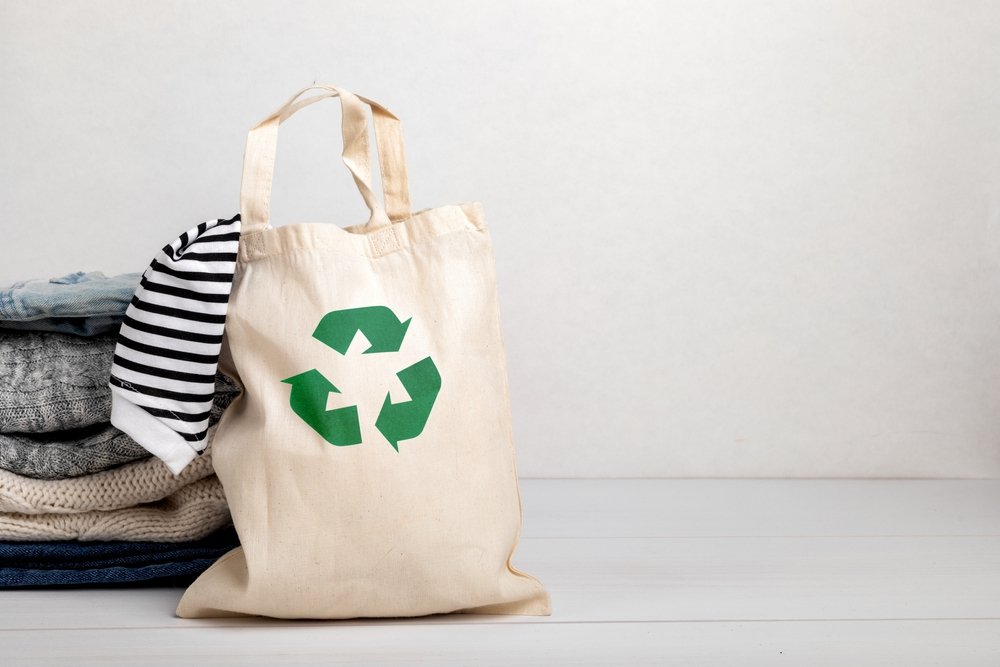
As the number of conscious buyers has risen in the last years in the fight against climate change, the choice for clothes shopping has shifted to opting for clothes made of cotton.
It has long become clear that microplastics hugely damage the environment and ethical shoppers try to avoid any sweaters, shirts and blouses made out of synthetic fibres.
But the problem with this approach is that cotton, particularly when it’s conventionally grown, can also damage the environment. One solution for the green shopper is to buy products made of organic cotton.
We've taken a closer look at different clothing materials to find out whether organic cotton really is a sustainable alternative to synthetic materials.
First of all, cotton is a renewable resource. Meanwhile, crude oil is burned to produce synthetic clothing. This releases carbon dioxide, which further accelerates global warming and climate change.
In addition, synthetic fibres are not biodegradable. "Synthetics don't decompose and eventually become microplastics," says Heike Hess of the International Association of Natural Textile Industry (IVN).

The German association representing manufacturers of synthetic fibre naturally takes a different view. Taking all ecological aspects into account, artificial fibres are actually better for the environment than cotton, the association told Deutsche Presse-Agentur (DPA). Synthetic fibres relieve the pressure on agricultural land, freeing it up to grow more food, the association says, adding that less water is needed to produce them.
Hess is aware of these arguments, but she says the claim that the carbon footprint of synthetic clothing is better overall can be misleading, as it usually doesn't take the extraction of crude oil into account.
When it comes to cotton, the high level of water consumption due to overused soils is indeed problematic, says Hess. In conventional cotton cultivation, the soil is often overfertilized with chemicals and becomes degraded, she explains.
Nicole Pälicke, head of People Wear Organic, a company that sells certified baby and children's clothing made from organic cotton, agrees. Growing conventional cotton damages the soil, she says.
"Organic cotton definitely saves water because of the better soil quality," says Hess. That's because the soil can store water better. Farmers also plant different plants between the cotton to keep insects away, provide more shade and minimize erosion, she explains. This means the soil is healthier, "there's more life in it," Hess says.
Another important method often used in organic cotton farming is crop rotation. Farmers also don't use genetically engineered seeds or fertilizers and no pesticides or chemical fertilizers.
Consumers can tell whether organic cotton is the raw material used in a garment by looking for one of the following certification labels –
1) Organic Content Standard from Textile Exchange: This label certifies that a certain percentage of organic cotton is traceable from the field to the product. "But here, it's also not clearly defined how high the percentage has to be," says Hess. "There are products with 100% organic cotton, but the label is also awarded for 5% or more with the addition of ‘blended.’"
2) Global Organic Textile Standard (GOTS): The entire production chain is certified, not just the raw materials. According to Hess, at least 70% organic fibres are required for this certification. Products with the suffix "organic" must have 95% organic fibres.
3) Naturtextil BEST: This IVN label is only awarded to clothing if it is made from 100% organic cotton, and it evaluates the entire production chain. "But the label is still not very common in the market," says Hess. There are other labels used for cotton clothing, but they don’t certify organic cotton.
So, just how sustainable are clothes made out of organic cotton?
In Heike Hess' view, it is the most sustainable way to dress – if you consider the raw materials used alone. At the same time, there is a major caveat: "In production, of course, quite a lot of pollution can still happen during spinning, weaving, dyeing, and sewing." Furthermore, the raw materials say nothing about whether the workers are paid fairly.
Hess concludes, "Using organic cotton as a benchmark is a good start, but it doesn't make a sustainable garment." So here again, it's important to look for labels that certify, if possible, that the entire manufacturing process is sustainable.
